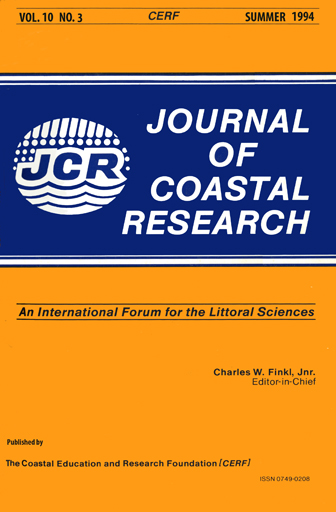Historical Shoreline Mapping (I): Improving Techniques and Reducing Positioning Errors
Keywords:
Aerial photography, cartography, coastal erosion, photogrammetry, shoreline changeAbstract
A critical need exists among coastal researchers and policy-makers for a precise method to obtain shoreline positions from historical maps and aerial photographs. A number of methods that vary widely in approach and accuracy have been developed to meet this need. None of the existing methods, however, address the entire range of cartographic and photogrammetric techniques required for accurate coastal mapping. Thus, their application to many typical shoreline mapping problems is limited. In addition, no shoreline mapping technique provides an adequate basis for quantifying the many errors inherent in shoreline mapping using maps and air photos. As a result, current assessments of errors in air photo mapping techniques generally (and falsely) assume that errors in shoreline positions are represented by the sum of a series of worst-case assumptions about digitizer operator resolution and ground control accuracy. These assessments also ignore altogether other errors that commonly approach ground distances of 10m. This paper provides a conceptual and analytical framework for improved methods of extracting geographic data from maps and aerial photographs. We also present a new approach to shoreline mapping using air photos that revises and extends a number of photogrammetric techniques. These techniques include (1) developing spatially and temporally overlapping control networks for large groups of photos; (2) digitizing air photos for use in shoreline mapping; (3) preprocessing digitized photos to remove lens distortion and film deformation effects; (4) simultaneous aerotriangulation of large groups of spatially and temporally overlapping photos; and (5) using a single-ray intersection technique to determine geographic shoreline coordinates and express the horizontal and vertical error associated with a given digitized shoreline. As long as historical maps and air photos are used in studies of shoreline change, there will be a considerable amount of error (on the order of several meters) present in shoreline position and rate-of-change calculations. The techniques presented in this paper, however, provide a means to reduce and quantify these errors so that realistic assessments of the technological noise (as opposed to geological noise) in geographic shoreline positions can be made.


